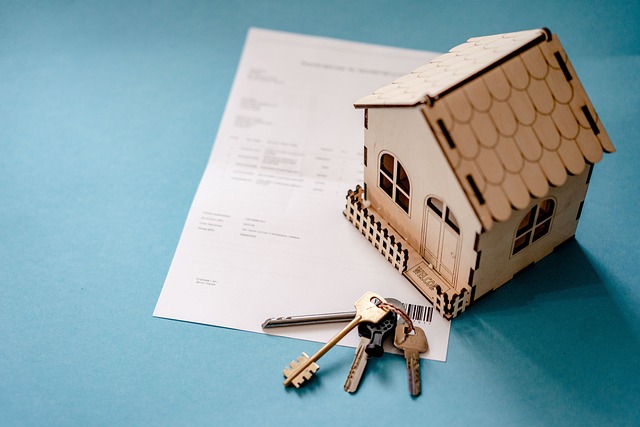Lease-to-Own Homes: Practical Guide to Buying a Home
Lease-to-own (aka rent-to-own or lease-option) combines renting with a path to purchase, giving renters time to build credit, save for a down payment, and lock a future price. This comprehensive guide covers advantages, pitfalls, typical costs, where to look for deals, and the checklist to review before signing a lease-to-own contract so you can decide whether this route suits your homeownership plan.

Lease-to-own agreements blend a standard rental lease with an option to buy the property later. They can be a helpful bridge for renters who need time to improve credit scores, accumulate a down payment, or wait for mortgage approval. Sellers and investors also use lease-to-own terms to secure steady income and increase the odds of a sale without listing immediately.
How lease-to-own works
A lease-to-own contract typically has two parts: the lease (your tenancy) and an option agreement (the right to purchase). As the tenant-buyer, you pay an upfront option fee that grants you the exclusive right to buy the home during the lease or at its end. Many agreements also allocate a portion of monthly rent as a credit toward the purchase price if you exercise the option.
The sale price is usually set when the contract is signed, though some arrangements tie price to a formula or future appraisal. Details like whether the option fee and rent credits apply and how they are documented should be clearly spelled out in the contract.
Why tenants and owners choose lease-to-own
Lease-to-own can deliver benefits for both sides when structured properly.
- For prospective buyers:
- Time to repair credit and meet mortgage qualifications.
- An opportunity to lock in a purchase price, which can be advantageous if home values rise.
- A way to accumulate rent credits and save toward a down payment while living in the property.
- Greater incentive to maintain the home compared with shorter-term rentals.
- For sellers and investors:
- Attracts tenants who are motivated to preserve the property and are likely to stay longer.
- Brings in an upfront option fee and often a rent premium, improving cash flow.
- Creates a defined path to sale without the immediate cost and hassle of staging and listing.
Risks and drawbacks to understand
Though attractive, lease-to-own deals are not without pitfalls:
- Non-refundable payments: Option fees and any rent credits are usually non-refundable if you decide not to buy or cannot secure financing.
- Market exposure: If the market drops, you may be committed to a purchase price that exceeds current value.
- Financing uncertainty: There is no guarantee you will qualify for a mortgage later — you could lose the money invested during the lease.
- Seller exposure: Owners may forgo future appreciation if the locked-in price is lower than subsequent market value.
- Maintenance responsibilities: Contracts sometimes shift repair and upkeep duties to the tenant, which can lead to unexpected expenses.
Where to find lease-to-own opportunities
Lease-to-own properties aren’t always listed in conventional rental or for-sale listings. Try these approaches:
- Work with local real estate agents who specialize in lease-option deals.
- Search dedicated online marketplaces and classifieds that list rent-to-own or lease-option homes.
- Network with investors, landlords, and wholesalers; they often convert inventory to lease-to-own offers.
- Watch foreclosure auctions and REO listings — investors sometimes convert purchased properties into lease-to-own arrangements.
Always verify offers carefully and be on guard for deals that seem too good to be true.
What to review before signing
Protect your interests by running through a detailed checklist:
- Purchase price mechanics: Confirm whether the price is fixed at signing, indexed to an appraisal, or determined by a formula.
- Rent credits: Understand what portion of monthly rent (if any) is credited toward the purchase and how those credits will be recorded.
- Option fee terms: Know the amount, whether it’s refundable (often it is not), and what conditions affect refunds.
- Responsibilities: Clarify who pays for maintenance, repairs, insurance, and property taxes during the lease.
- Timelines: Set explicit deadlines for exercising the purchase option and securing financing.
- Property condition: Obtain disclosures and arrange a professional home inspection to identify latent defects.
- Financing plan: Talk with mortgage lenders early to learn likely loan requirements and create a realistic timeline to meet them.
- Legal review: Have a real estate attorney or experienced advisor examine the contract to flag ambiguous clauses or unfavorable language.
Typical costs and how they’re structured
| Cost Component | What it covers | Typical Range |
|---|---|---|
| Option Fee | Upfront payment for exclusive purchase right | 1–5% of purchase price |
| Monthly Rent | Regular rental payment during lease | Market rate plus a premium |
| Rent Premium/Credit | Portion of rent applied to purchase | $100–$500/month (varies) |
| Maintenance | Who handles repairs and upkeep | Varies by agreement |
| Purchase Price | Agreed future sale price | Set at contract signing or tied to formula |
Prices, rates, or cost estimates mentioned in this article are based on the latest available information but may change over time. Independent research is advised before making financial decisions.
Bear in mind the option fee and rent credits are usually forfeited if you do not complete the purchase. Many sellers set a higher future selling price to compensate for time on the market and expected appreciation.
Final considerations and next steps
Lease-to-own can be a sensible pathway to homeownership for people needing extra time to secure financing or build savings. It offers structure and the chance to live in the home you intend to buy, but it is not a risk-free shortcut.
Before committing, consult a real estate agent experienced with lease-option agreements and have a qualified real estate attorney review all paperwork. Speak with mortgage lenders early so you understand the credit scores, income documentation, and down payment you’ll need. With careful planning, clear contracts, and professional advice, a lease-to-own arrangement can become a strategic step toward owning your home.






